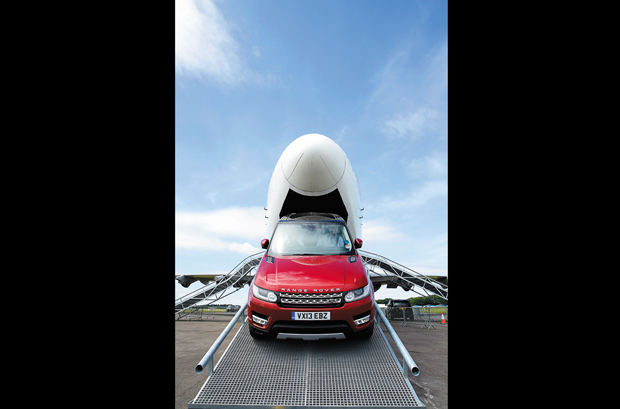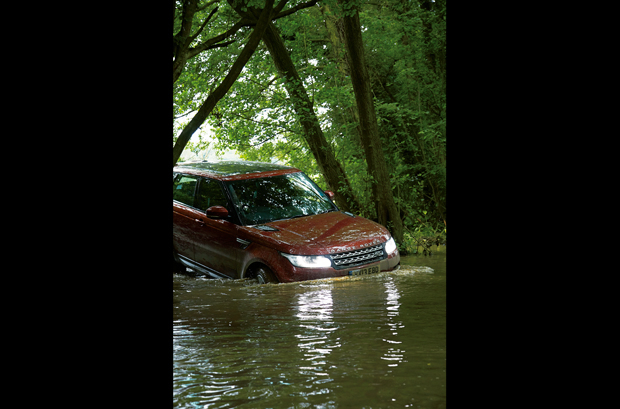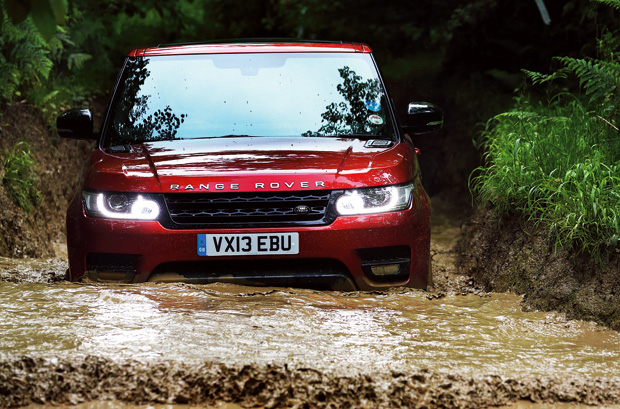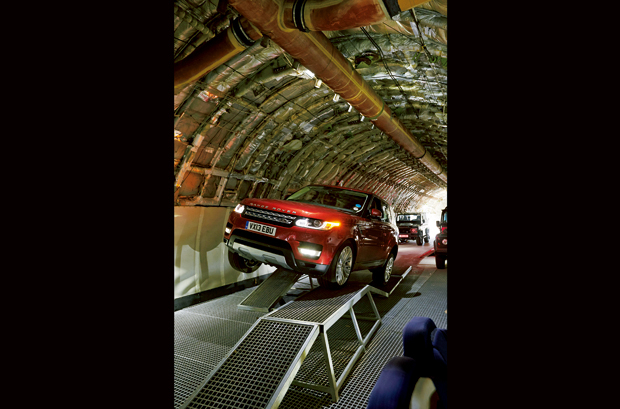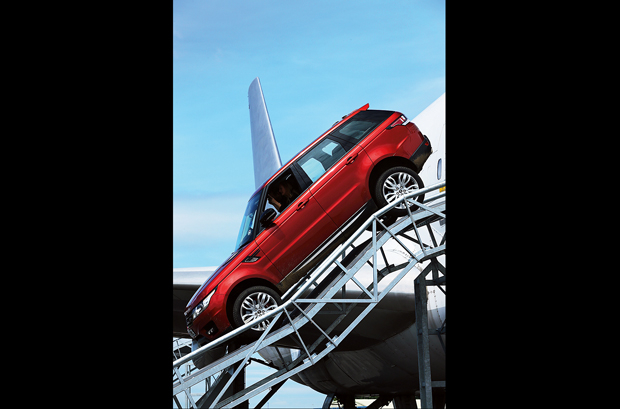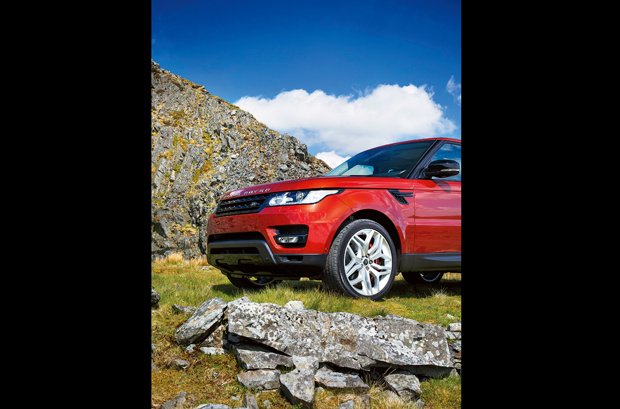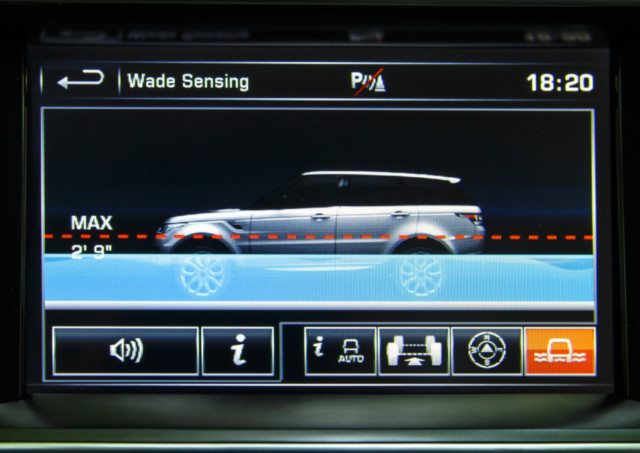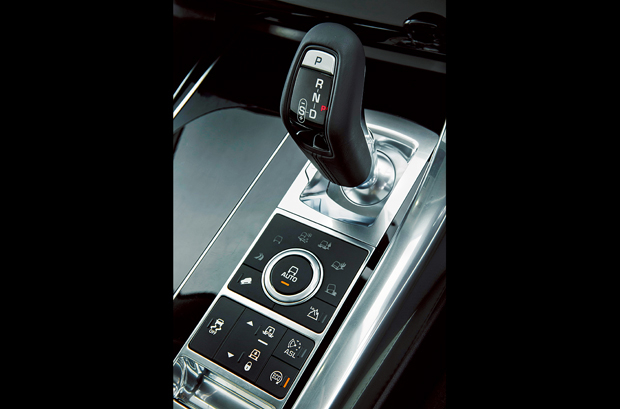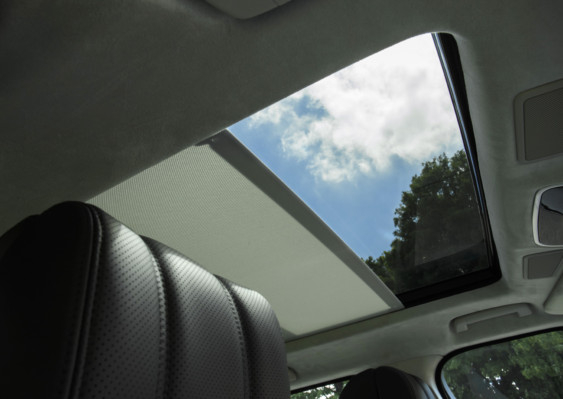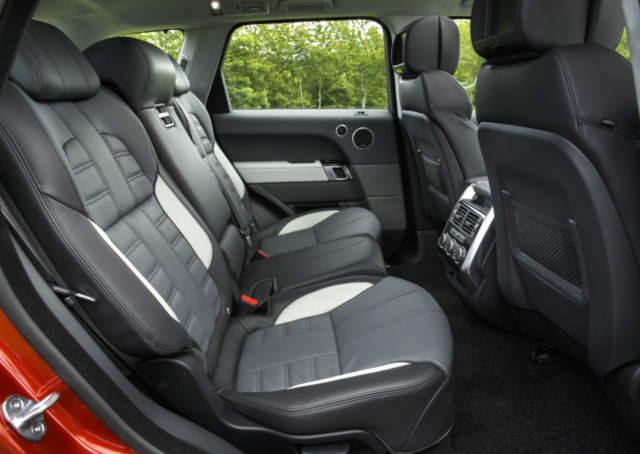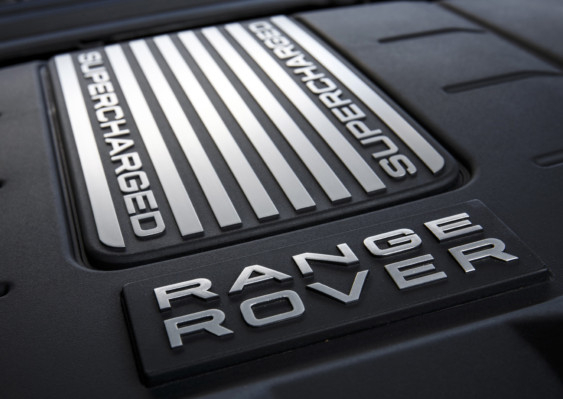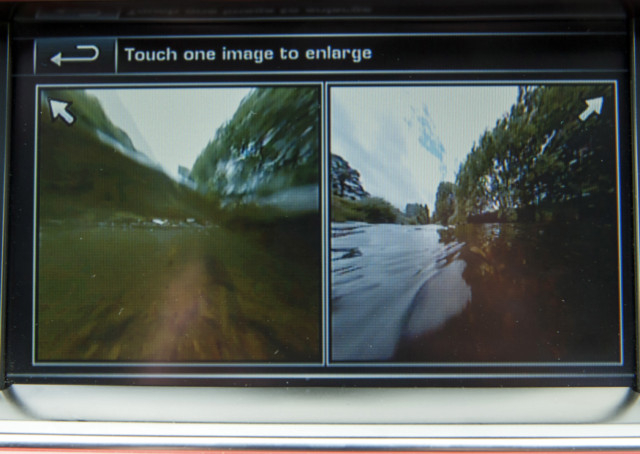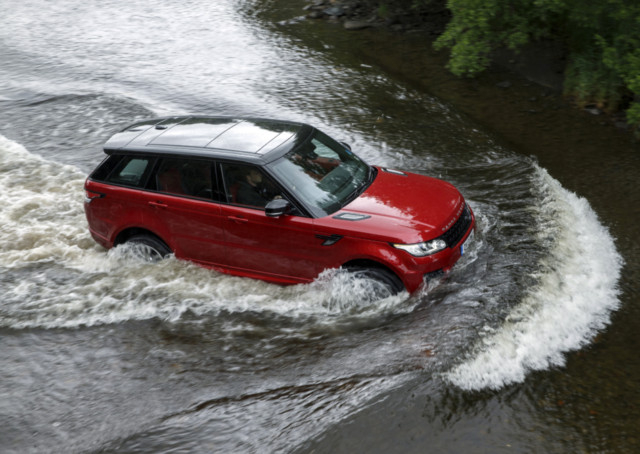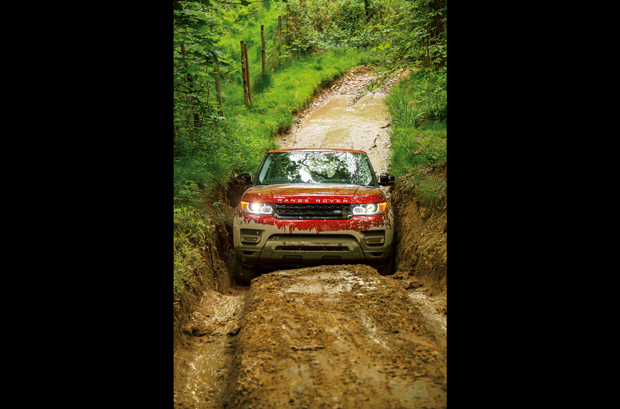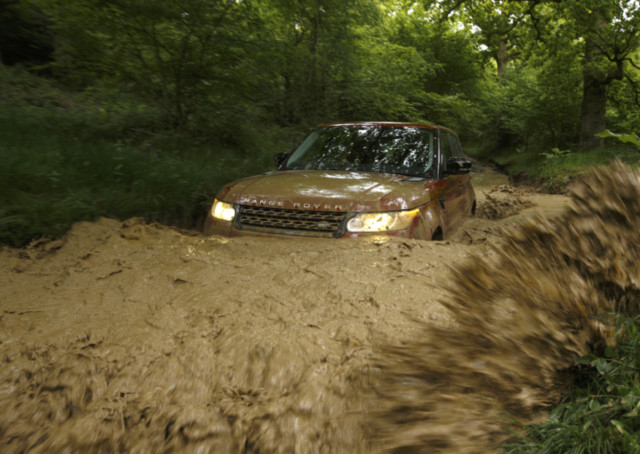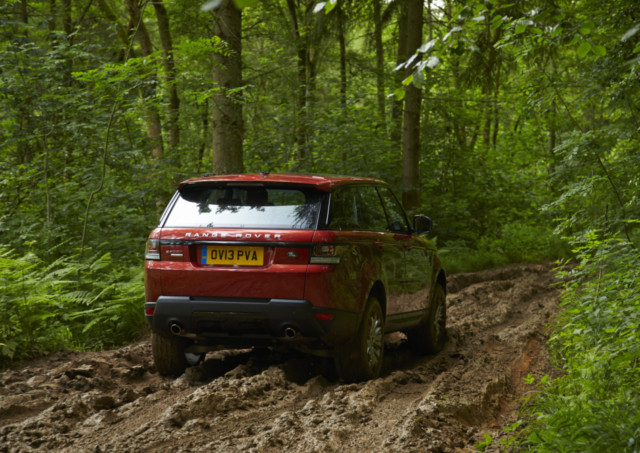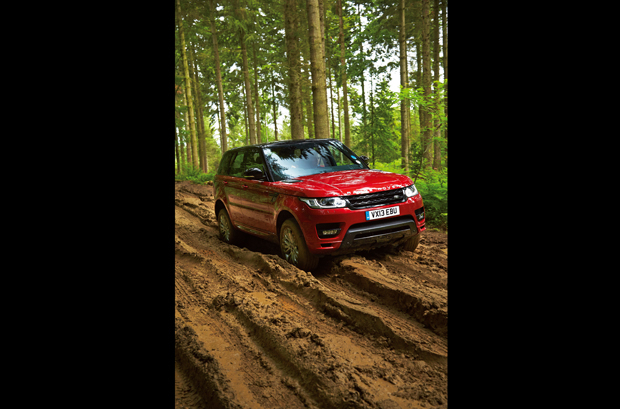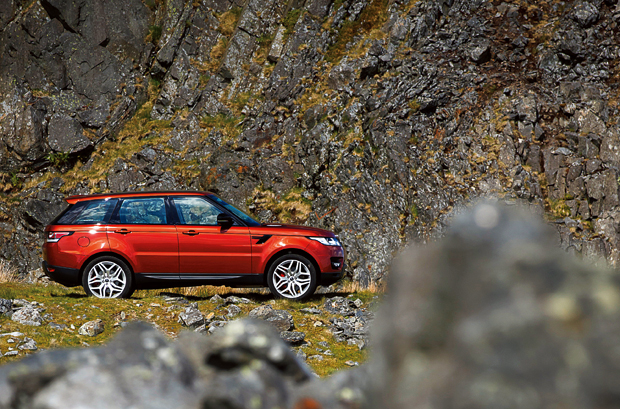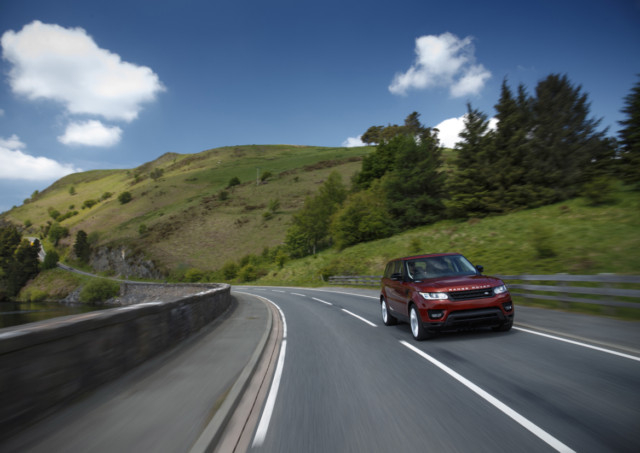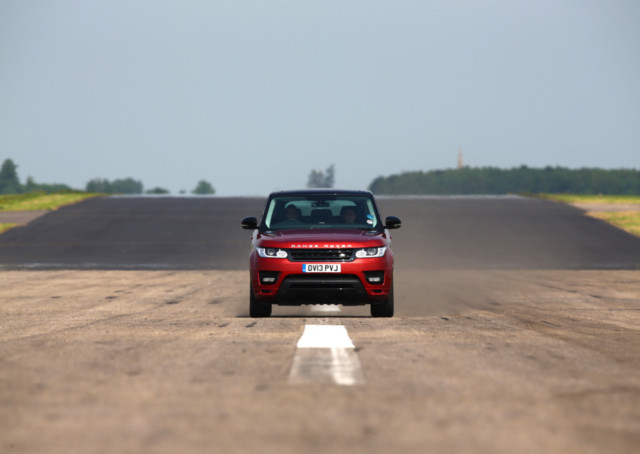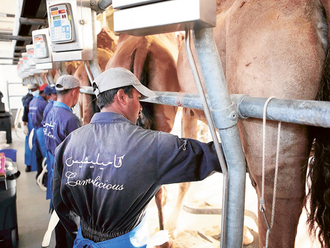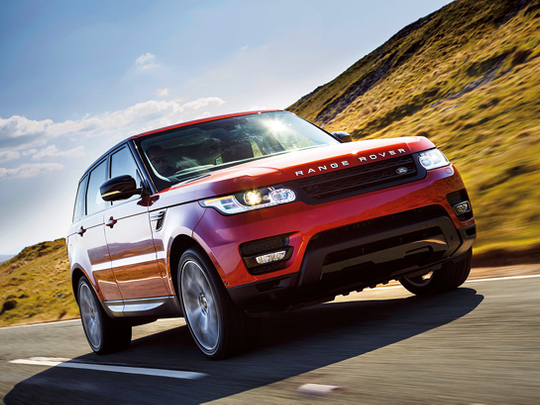
“Welcome to first class Mr Ansell, how was your journey here?” asks the smartly uniformed gentleman standing to my right. “Very comfortable” I reply, “though to be honest, the off-road course in economy and the large holes in the fuselage were a little disturbing.”
You see, having trained as an airframes engineer, I have a keen eye for these things. The fact that my plane was missing all its engines was worrisome. That it had four steel ramps emerging from the fuselage was unusual, but they could no doubt be removed long before we’d had the engines refitted. No, what was really troubling me was my view of the underside of the white V8 HSE ahead of me, currently driving earthwards from just behind the pilot’s seat, down at a dramatic angle and out through the hold. It was no good, I had to ask the obvious question. “Where’s the cargo?”
‘Unusual’ doesn’t begin to describe Land Rover’s party trick for the launch of the all-new Range Rover Sport, but I didn’t need to drive over an obstacle course through the fuselage of an airliner to know how adept the new Sport was at handling challenges — I’d learned that the day before in the hills of Wales and mud baths of Herefordshire.
No, the 747 stunt was a declaration; the new Range Rover Sport is ready for take-off, and it’s a first-class piece of kit.
There are plenty of SUV manufacturers who claim their vehicle is both a sportscar and an excellent off roader, but they do tend to be a little shy when it comes to serious off-road testing. Perhaps that’s not surprising given their products’ road biased performance, but when a vehicle wears a Land Rover badge, there is a sense of expectation from its core customers that the words “Utility Vehicle” should have equal billing with that of “Sports”.
Whilst it’s true that the majority of Gulf-bound SUVs won’t ever make it to the Liwa crescent, there are a few that will, and there’s always plenty heading for the beach or tackling a few kilometres of rocky wadi every weekend. So when Land Rover set out to replace the old Range Rover Sport, the new model had to be more than just a pretty face on a highway, it had to handle the rough with the smooth and the rocks with the sand.
Although development of the Sport ran alongside that of its larger 2013 Range Rover sibling, it actually shares only 25 per cent of the components. Both benefit from enormous weight savings over their predecessors thanks to all-aluminium body-shells, which for the Sport means 420kg shaved off of its kerb-side mass. That reduced weight translates into faster acceleration (0-100kph in 5.3 seconds for the V8), better fuel economy and CO2 emissions down by around 15 per cent.
The lightweight suspension’s all new too, manufactured almost entirely from aluminium, with wide-spaced double-wishbones at the front and an advanced multi-link layout at the rear. Coupled with Solihull’s fifth generation of air springs and Constantly Variable Dampers, the Sport can hunker down at highway speeds for greater stability, yet demonstrate impressive wheel articulation when rock crawling and dune bashing.
To prove this, the Sport’s engineering team had me tackle the Mud Run at Eastnor Castle, a quagmire of syrupy mud laced with ruts seemingly as deep as the 21in rims with which my supercharged 3.0-litre V6 was shod. Throw in perilously steep climbs up grassy slopes slick with the glutinous remains of said run, and deeply excavated pools large enough to hide a herd of hippos, and you have a recipe for ‘mud plugging extraordinaire’.
This was an ordeal I least expected the Sport to pass, but the fact was that fitted with the same wheels and tyres I had just driven the car on at brisk speeds through sweeping Welsh country roads, I was now crawling and sliding — but always progressing — through the mud run.
Up to your bonnet in a pond of earthy soup? No problem Sir, the new Range Rover Sport has a wading depth of 850mm. Climbing cross axled out of a river bed, two wheels in mud, one on a tree stump and the other in the air? No problem Madam, the new Range Rover Sport’s Terrain Response system, ride height adjustment, optional two-speed transfer case, and Dynamic Active Rear Locking Differential, will have you out of here in a heartbeat. Of course it doesn’t hurt having 340 horsepower under your foot, but if Sir would prefer a little more, try the 510 horsepower supercharged V8 for size (450 and 625Nm of torque respectively).
For a test a little closer to Gulf conditions, next was an eight-kilometre firm gravel road, not dissimilar to a hard-packed gatch track. If there’s one thing better than driving slowly in mud, it’s hammering 2,140kg of SUV down a forest stage, pine trees hurtling either side of your wing mirrors, with an anxious passenger stamping furiously on his imaginary brake pedal. Right hand hairpin approaching? Time to crank up the 23-speaker Meridian sound system and drown out my friend’s tormented whimpers, as I work my way down through the eight speed ZF gearbox. Next I call on the Range Rover’s Brembo brakes and electronic trickery. As its Roll Stability Control, Torque Vectoring, Directional Stability Control, and Electronic Traction Control combine to take us round the corner in slide-ways style, my passenger increasingly grateful for the grab handles and adjustable side bolsters, I can’t help but be impressed by this overland express — even the 3.0-litre V6 can really shift!
Back on the tarmac we were handed the keys to a 5.0-litre V8 HSE and though now restricted by speed cameras and basic road-sense, the torque, power and throaty burble of this excellent supercharged power plant, which I had recently experienced in the F Type (it’s fundamentally the same engine) seduced me all over again.
Look, I’m an eight cylinder kinda guy, and if its suspension is the key to Utility then the V8 unlocks this vehicle’s Sport. At least if you sell your track-day car to help pay for the Range Rover, you’ll not be left wanting for horsepower or adrenaline in the tarmac department.
But enough about mud, gravel and speed, what about the car’s interior? You’ll notice as you step inside how uncluttered the cockpit seems when compared to that of the outgoing model. The number of switches and buttons has been reduced by half, so the dashboard and centre console have a better looking, less distracting appearance. Mind you, I counted 15 controls on the steering wheel, 17 if you specify the paddle gearshift, though remember those paddles come at a price unmatched by their cheap, plastic appearance.
Otherwise the fabrics and soft-touch materials in the cabin are pleasant and well fitted and with the optional full- length moon roof installed, the cabin interior has a bright and airy feel to it.
Driver and front seat passenger have the usual ‘on top of the world’ commanding driving position, and for the first time you can now specify a Range Rover as a seven-seat vehicle, with the Sport featuring two optional seats in the rear. Although they are best suited to children not adults, they cleverly fold flat with no loss of boot space; Solihull’s engineers have found room for these seats as well as giving passengers in the regular back seats another 24mm of liberty by stretching the new model’s wheelbase by 178mm to 2,923mm. During a long shared drive across Britain’s beautiful Cotswolds I put this to the test, and with the front seat set for a 1.84m tall driver, there was comfortable space for a passenger behind of similar build. Not only that but I had 40mm or so of headroom back there, which is useful when off-roading.
Infotainment is controlled via an 8.0in touchscreen, with optional 10.2in screens in the front seat head rests. There’s the usual Bluetooth, iPod and USB connectivity, DAB radio and quite possibly a dozen other things that I didn’t have time to play with.
Other optional creature comforts within the Sport include 14-way adjustable air conditioned seats, a cooler compartment in the centre cubby, four zone air-conditioning and a choice of rear seat split pattern.
Speaking of comfort, it’s noticeable just how quiet it is in the cabin, whether at moderately high speeds off road or cruising on the motorway. Range Rover is claiming a best-in-class performance and though I’d forgotten to pack my decibel meter, I’d be inclined to believe them. On tarmac the suspension and electronics combine again to cosset the driver; that same torque vectoring means higher cornering speeds and yet there’s no significant body roll. Other driver and safety aids include Hill Start Assist, Parallel Parking Assist, Electronic Brake Force Distribution, Blind Spot Monitoring, Adaptive Cruise Control etc. If you can name it, afford it, and think of an acronym, you can have it.
The UAE has long been a successful market for Range Rover and the Sport has been the most popular model with its younger buyers for years. This new model is lighter, faster, more fuel efficient, better equipped, and in my opinion looks sharper too. That the company has clearly spent so much time getting its off-road performance right is simply going to add to the appeal, and the fact that it can now be specified as a seven seater is probably a deal clincher. Expect to see plenty of 2014 Range Rover Sports flying down a road near you soon.



